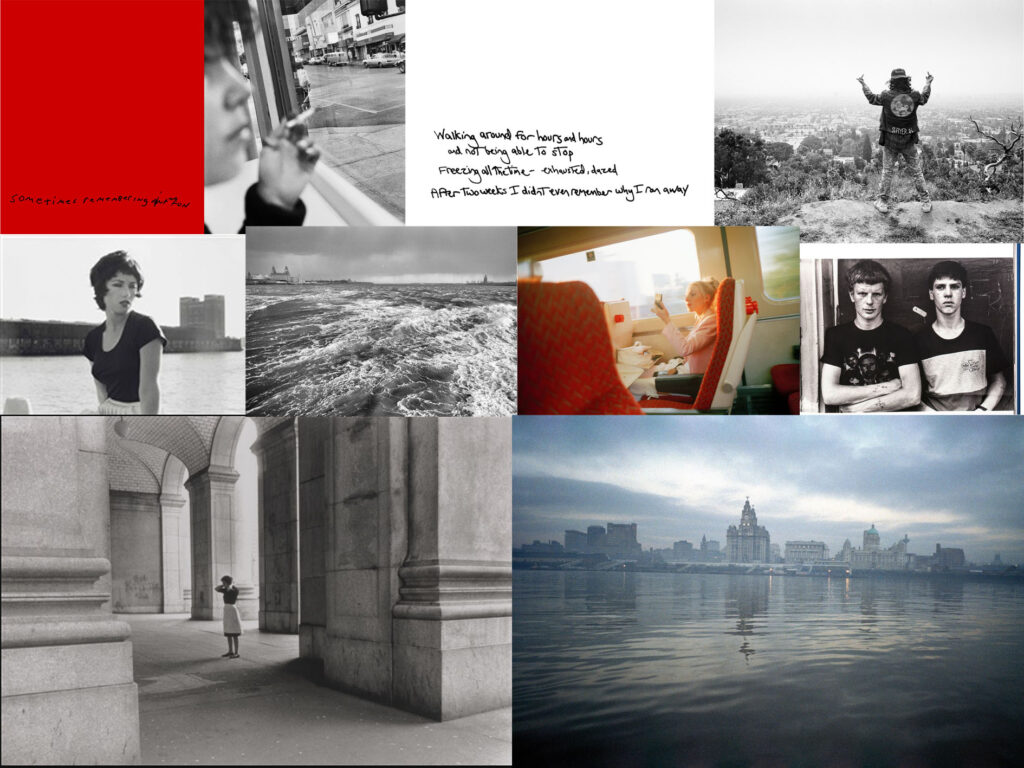Observe

What is the definition of observe?
To notice or perceive (something) and register it as being significant.
How does someone observe?

The character trait observant refers to the ability to pay close attention to details and to be aware of one’s surroundings. An observant character notices things that others might miss and is able to draw conclusions from small clues or hints.
How can we observe within photography?
1. Slow down and use all your senses to observe.
2. Don’t rush from one viewpoint to another. Take some time to study all the elements of a scene.
3. Elements are all the different things that make up a scene and each will have different attributes – size, shape, lines and angles, colour, texture and tone. Spend some time observing a landscape and make a mental note of the individual elements that make up the whole. Observe how they interact with each other and contribute to the overall scene.
4. Ask yourself questions every time you observe an element.
5. Take a walk with your camera and set yourself challenges to find different elements to photograph.
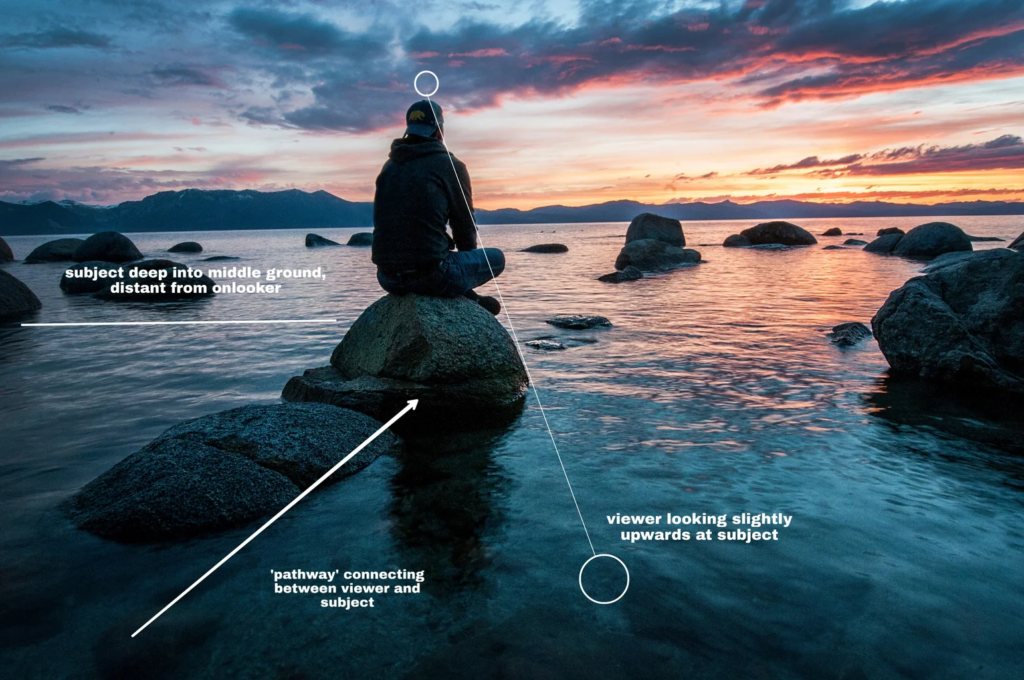
Seek

What is the definition of seek?
Attempt to find (something). Attempt or desire to obtain or achieve (something).
How does someone seek?
seek

- He sought revenge for his son’s murder.
- During the war, she sought asylum in Spain.
- They sought refuge in Canada.
- The company is seeking new ways to improve service.
- The mayor is seeking reelection.
- She seeks perfection in her work.
- attention-seeking behavior
- Immigrants come to America to seek their fortune.
How can we seek within photography?
Seeking in photography is about exploring deeper layers of meaning, expression, and connection through the lens. It involves experimenting with different styles, techniques, and subjects to uncover your unique perspective, while engaging with both the technical and emotional aspects of the medium. By reflecting on your work, studying the work of others, and pushing boundaries, you can discover new ways to express ideas and capture moments that resonate with you. Ultimately, seeking in photography is a continuous journey of self-discovery and creative growth.
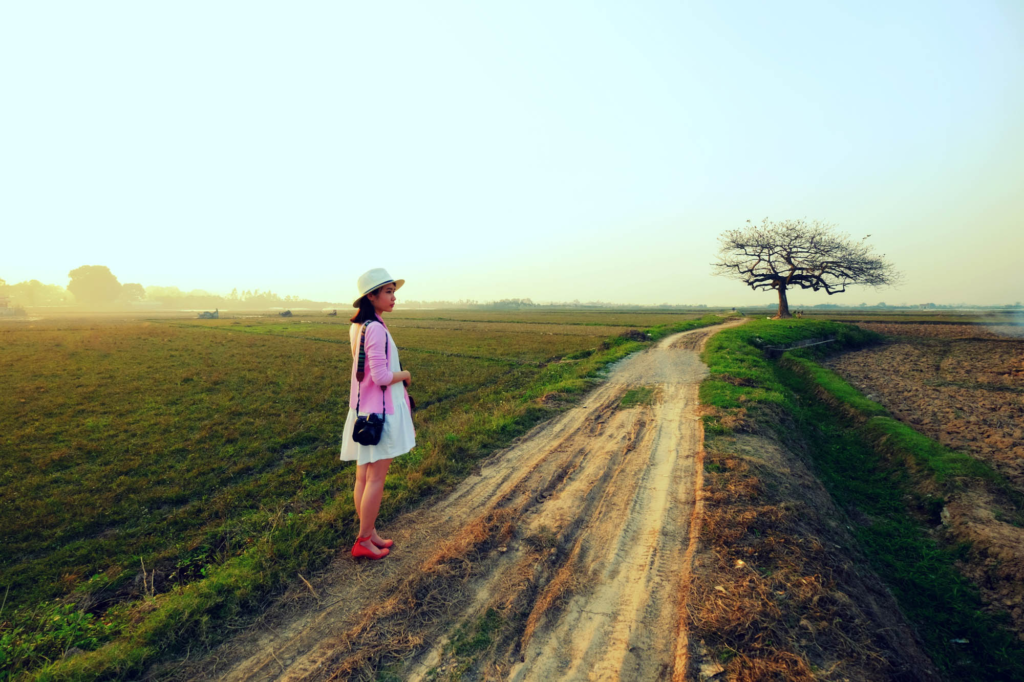
Challenge
What is the definition of challenge?
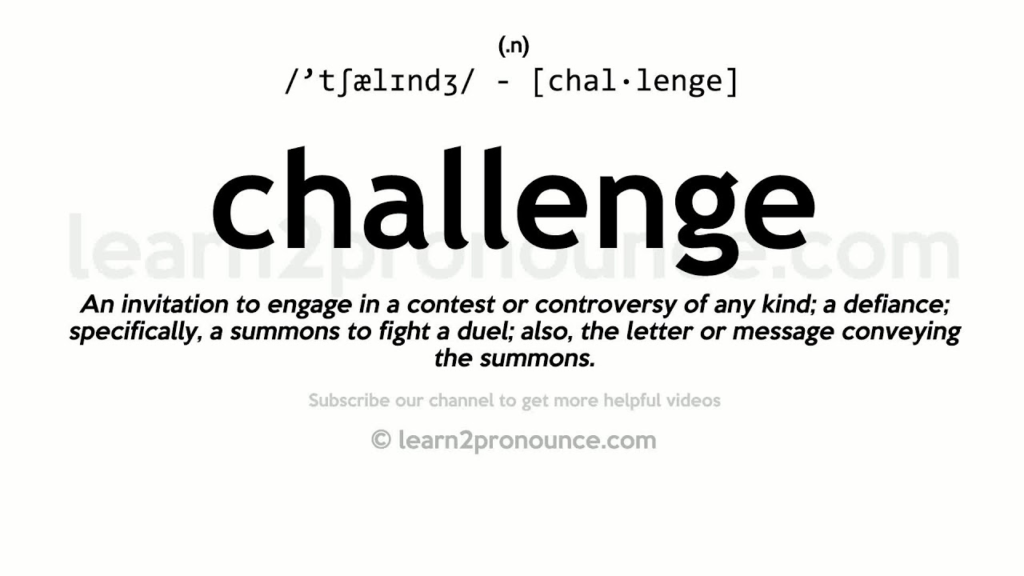
A call to prove or justify something. To challenge something means to question, dispute, or confront it, often in order to test its validity, assumptions, or limits. It can also involve pushing against established norms or overcoming obstacles.
How does someone challenge?
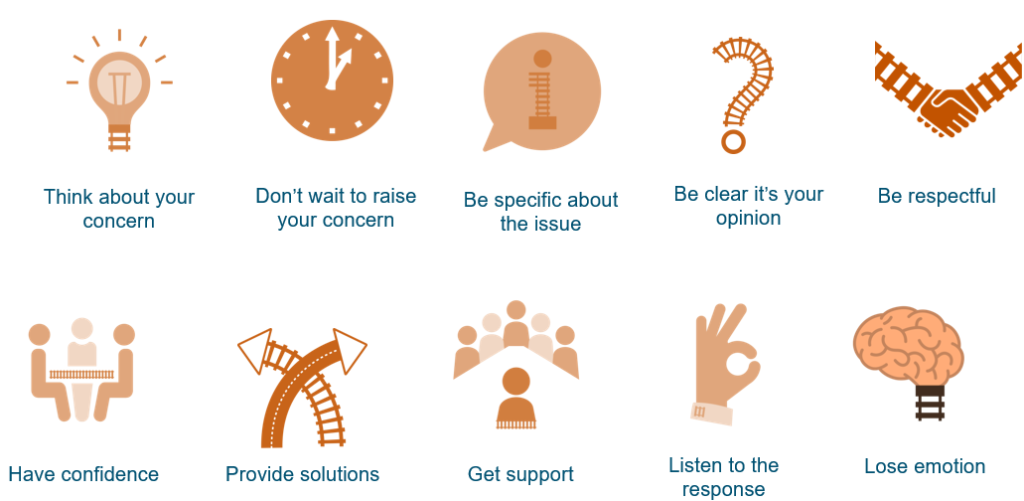
To challenge something, you first question its assumptions or validity by critically analyzing the details and underlying principles. This might involve presenting alternative viewpoints, offering evidence that contradicts existing ideas, or testing its limits through direct action. Challenging can also mean pushing boundaries or asking difficult questions to provoke deeper thought or change, whether in a conversation, a system, or an established belief.
How can we challenge within photography?
Challenging within photography involves questioning conventional techniques, perspectives, and subject matter to push the boundaries of the medium. This can be done by experimenting with new compositions, lighting, or unconventional equipment, as well as exploring controversial or overlooked topics. You might challenge yourself by stepping out of your comfort zone, photographing unfamiliar subjects, or defying traditional rules like symmetry or focus. Additionally, challenging photography can mean rethinking how images are edited or presented, using abstraction, distortion, or manipulation to evoke deeper meanings and emotions. Ultimately, it’s about testing limits, confronting expectations, and finding fresh ways to see and capture the world.

Mindmap
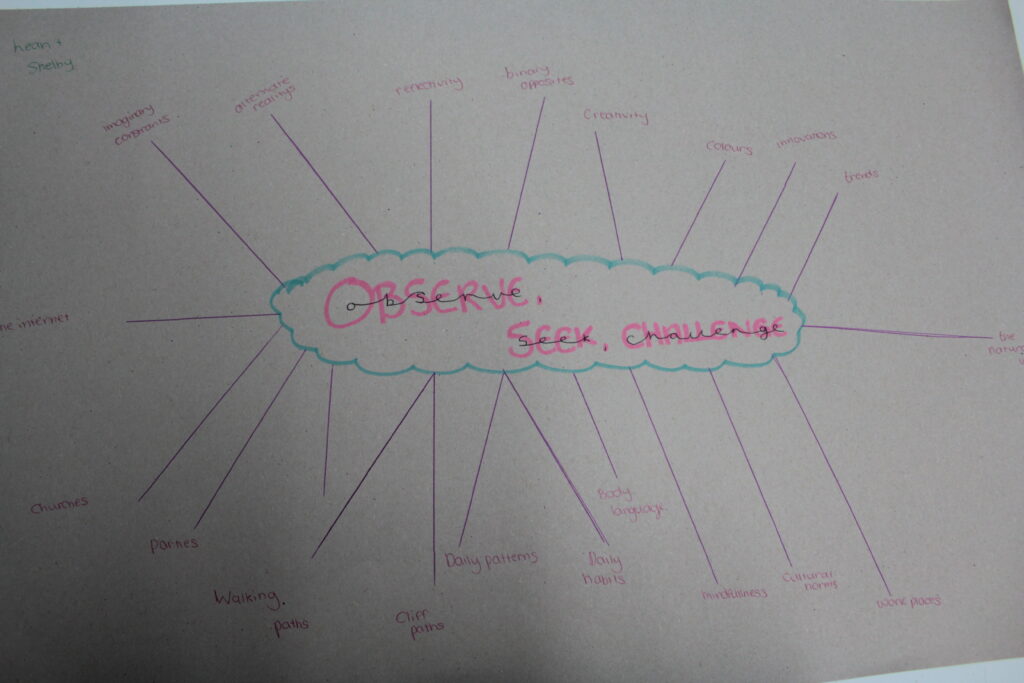
Mind Map: Observing, Seeking, and Challenging Photography
1. Observing Photography
- Key Idea: Passive, attentive awareness; capturing moments as they are.
- Core Themes:
- Patience
- Slow, deliberate shots
- Awareness of time and place
- Details
- Close-ups of everyday objects
- Nature (e.g., textures, light)
- Light & Shadow
- Natural light, soft focus
- Shadows and their shapes
- Intimacy
- Personal moments, stillness
- Candid, quiet moments
- Patience
- Techniques:
- Shallow depth of field
- Soft focus or diffusion filters
- Minimal editing, natural tones
- Visual Elements:
- Color Palette: Soft, muted tones (earth tones, pastels)
- Textures: Grainy, fuzzy, blurred
- Composition: Simple, direct framing
- Mood:
- Reflective, calm, contemplative
- Presence in the moment
- Core Themes:
2. Seeking Photography
- Key Idea: Active exploration, searching for meaning, narrative, or connection.
- Core Themes:
- Curiosity
- Looking for stories and meaning
- Exploring the unknown
- Journey
- Urban exploration, adventure
- Travel or discovering new perspectives
- Movement
- Capturing motion, energy, or change
- Connection
- Human interaction, relationships, gestures
- Nature
- Landscapes, dramatic skies, wildlife
- Curiosity
- Techniques:
- Wide-angle shots
- Motion blur or freeze-frame
- High contrast and saturation
- Visual Elements:
- Color Palette: Bold, saturated hues
- Textures: Sharp, detailed, crisp
- Composition: Dynamic, wide shots, dramatic angles
- Mood:
- Excited, curious, exploratory
- Adventurous, dynamic, driven
- Core Themes:
3. Challenging Photography
- Key Idea: Confronting norms, perceptions, and pushing boundaries.
- Core Themes:
- Provocation
- Disrupting the viewer’s expectations
- Questioning visual norms and stereotypes
- Surrealism
- Distortion of reality
- Unconventional perspectives and manipulation
- Juxtaposition
- Contrasting elements (e.g., old vs. new, organic vs. synthetic)
- Unlikely pairings in a single frame
- Abstract Expression
- Non-representational or fragmented imagery
- Focus on form, color, and shape
- Identity & Culture
- Challenging societal roles, norms, and identity representations
- Provocation
- Techniques:
- Double exposure, multiple exposures
- High contrast, experimental edits
- Unconventional angles and framing
- Digital manipulation or collage
- Visual Elements:
- Color Palette: Bold, stark contrasts, neon accents
- Textures: High contrast, rough, fragmented
- Composition: Dissonance, imbalance, abstraction
- Mood:
- Intense, confrontational, radical
- Thought-provoking, unsettling, transformative
- Core Themes:
Connections Between Themes:
- Observing → Seeking → Challenging:
- Evolving Narrative: Observing leads to seeking—understanding the world’s details fosters a curiosity to explore deeper. Seeking leads to challenging—questioning the narrative opens possibilities for disrupting norms.
- Emotional Flow: Observing is introspective and calm, seeking is dynamic and driven, and challenging is bold and provocative.
- Techniques Flow: A soft, reflective style in observing contrasts with the sharp, dynamic exploration of seeking, and ultimately, challenging photography embraces distortion, abstraction, and unpredictability.
Applications of Each Approach:
- Observing Photography:
- Portraits: Quiet, intimate moments (family, friends, strangers in natural settings).
- Landscapes: Capturing nature’s stillness and fleeting moments of beauty.
- Documentary: Truthful, observational work without imposing a narrative.
- Seeking Photography:
- Travel: Capturing new locations, cultures, and people in an exploratory way.
- Street Photography: Candid moments in everyday life, capturing stories.
- Fashion & Editorial: Seeking to tell a visual narrative through clothing and styling.
- Challenging Photography:
- Conceptual Art: Pushing visual boundaries to comment on culture or identity.
- Experimental Photography: Play with techniques, collage, abstraction, digital manipulation.
- Political & Social Commentary: Photographs that provoke thought, challenge authority, or explore societal issues.
End Result:
- Observing creates awareness and understanding.
- Seeking leads to discovery and curiosity.
- Challenging forces reflection and change.
MoodBoard
My Main Categories Will Include Themes Such As–
- Femininity
- Teenage Culture
- Anthropocene
